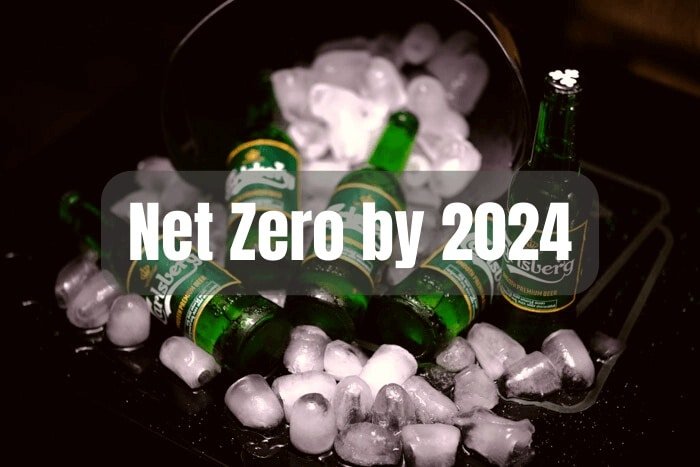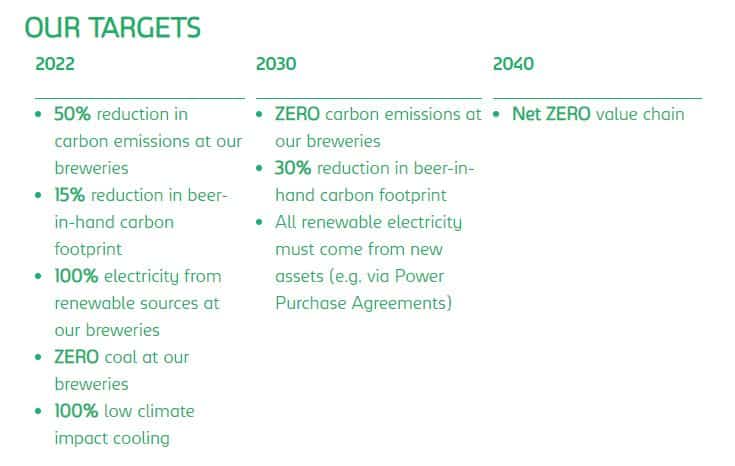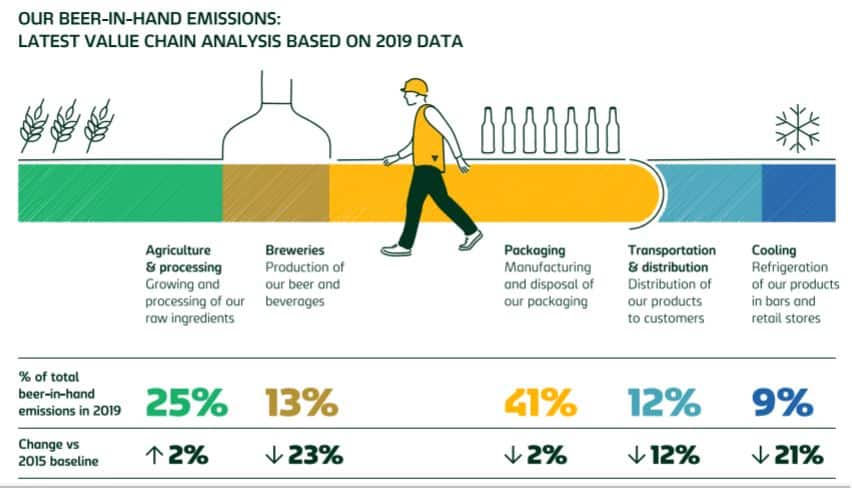Carlsberg Group unveiled its new sustainability targets which include achieving net zero emissions across its global supply chain by 2040.
Carlsberg has updated its environmental, social and governance (ESG) strategy with new climate-science aligned targets.
By 2030, the brewing giant also aims to achieve a 30% reduction in its beer-to-hand emissions.
Other major areas of focus under the new ESG program include zero farming footprint, zero packaging waste, and zero water use.
Cees ‘t Hart, CEO of Carlsberg Group, said that:
“We want to enable consumers to enjoy a great beer while leaving the smallest carbon footprint possible… To do this, we leave no stone unturned, from the grain and water that we brew with, to the recycling of empty bottles and cans once you’ve enjoyed your beer. This is the right thing to do, for our business and society.”
Carlsberg New ESG Program “TTZAB”
Dubbed ‘Together Towards ZERO and Beyond’, the firm’s new strategy serves as a roadmap to address its most material ESG matters in this decade and next.
TTZAB is an evolution of Carlsberg’s previous program launched in 2017 called Together Towards ZERO (TTZ).
Building on the TTZ, the brewer raised its zero carbon footprint ambition by maintaining its targets towards 2030 and introducing a new goal.
That’s going beyond with a new target to achieve net zero emissions across the entire value chain of Carlsberg by 2040. Under this new zero carbon strategy, the firm has the following targets:
The firm’s emissions are from two major sources: brewery and beer-in-hand.
Brewery emissions include Scope 1 (direct emissions) and Scope 2 (indirect emissions). They exclude in-house logistics and distribution operations. These are part of the beer-in-hand target.
The brewer said emissions from agriculture, raw materials processing, and packaging together account for over 65% of its total beer-in-hand emissions. This also refers to its value chain emissions from field to glass.
Those targets include Scope 1, 2 and 3 emissions from:
growing and malting raw materials; brewing, packaging, distributing and chilling products; and handling used packaging.
Here’s Carlsberg beer-in-hand emissions progress according to its recent ESG report.
Carlsberg Net Zero Pledge
To achieve its new net zero emissions targets, Carlsberg is focusing on 6 key actions.
Decarbonizing thermal energy usage: This is through converting boilers from using natural gas to using renewable thermal fuels or electrification.
On-site renewable electricity: Ensuring that any additional renewable electricity comes from on-site renewable electricity generation or is procured through Power Purchase Agreements.
Regenerative agricultural practices: Ensuring that cultivation of agricultural raw materials are through regenerative agricultural practices. They improve the ability of soils to capture and store carbon naturally.
Circular packaging systems: Ensuring packaging systems are fully circular and their production is decarbonized.
Electrified vehicles: Ensuring short-distance transport vehicles are electrified while long-distance vehicles are powered by renewable fuels.
Efficient cooling: Ensuring cooling equipment is increasingly efficient and powered by renewable electricity.
- Since 2015, Carlsberg has reduced its total (absolute) emissions by 29%, saving 246,000 tonnes of CO2.
The company was also able to reduce emissions at its breweries by 40% per hl (hectoliter) beer produced since 2015. At the same time, it managed to cut emissions of glass bottles by 90%.
In 2021, one of its breweries in Switzerland invested in a heat pump that saves 400 tonnes of carbon and 100,000 hl of water a year.
Packaging holds the largest share in Carlsberg’s total emissions (41%).
This is why the firm plans to execute the circular packaging solutions.
By 2030, the firm targets to use 100% recyclable packaging across its chain, collecting, and recycling 90% of bottles and cans. It also plans to reduce virgin and fossil-based plastics by 50% and use 50% recycled content in making bottles and cans.
Lastly, as the company buys most of its barley through open markets, it doesn’t have a strong influence over how the plant grows. But it works directly with barley growers where the firm runs its own maltings to promote sustainable farming practices.
That includes techniques that use low or no tillage to boost biodiversity and soil fertility. It also helps cut emissions by eliminating ploughing and minimizing soil disturbance.
Carlsberg new net zero emissions targets are part of its wider corporate strategy. The brewer called this a “key mechanism” for abating risks and driving positive change.
Carlsberg join the growing number of brewers that are making new zero commitments. Heineken last year released plans to reduce its scope 1 and 2 emissions by 90% by 2030. and aims to go to net zero from barley to bar by 2040.



